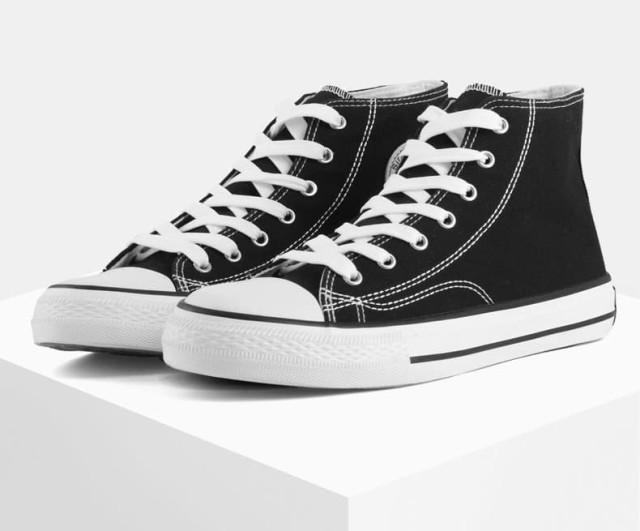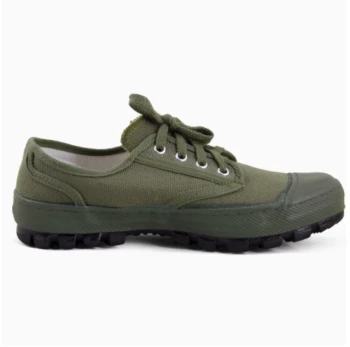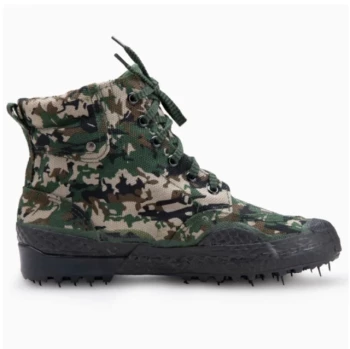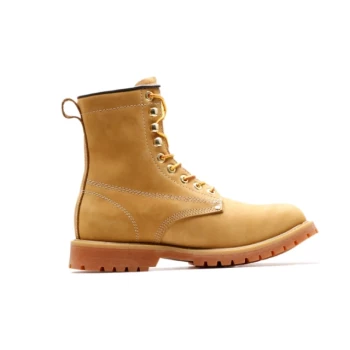Understanding the nuanced differences between vulcanized shoes and their alternatives can transform your footwear experience—whether you're skating, working, or simply walking. This guide breaks down the science, performance trade-offs, and ideal use cases to help you make informed decisions.
Vulcanized Shoes Demystified
The Science Behind Flexibility and Board Feel
Vulcanization isn't just a buzzword—it's a game-changing process. By bonding rubber soles to uppers under high heat (typically 120–180°C) and pressure, manufacturers create soles that are:
- Thinner and more flexible, mimicking barefoot movement
- Highly responsive, offering superior grip and tactile feedback
- Quick to break in, reducing the "stiff shoe" phase
For skateboarders, this translates to unparalleled control during technical tricks like flip grinds or bowl carving. The thin construction lets your feet "read" the board's surface, much like a pianist feels piano keys.
Durability vs. Performance: A Cost-Benefit Analysis
While vulcanized shoes excel in sensitivity, they make concessions:
- Shorter lifespan: The thin soles wear faster, especially during high-impact activities
- Less cushioning: Minimal shock absorption for jumps or stair gaps
- Weather vulnerability: Porous materials absorb water more readily
Cupsoles counter these weaknesses with thicker, one-piece rubber construction but sacrifice the "connected" feel vulcanized shoes provide.
Matching Footwear to Your Activity
Skateboarding and Casual Wear: Why Vulcanized Reigns
For street skaters and transition riders, vulcanized shoes are often the gold standard. Their advantages include:
- Precision: Easier flick control for flip tricks
- Adaptability: Conforms to foot shape for personalized comfort
- Style: Sleek profiles favored in casual fashion
They're also ideal for light daily wear, offering flexibility for walking or driving.
High-Impact Sports: The Case for Cupsoles
When activities demand durability over sensitivity, consider cupsoles for:
- Basketball/volleyball: Superior ankle support and shock absorption
- Construction work: Thick soles resist punctures and abrasions
- Long-distance wear: Even pressure distribution reduces fatigue
Maximizing Your Shoe Lifespan
Maintenance Tips for Vulcanized Soles
Extend your shoes' life with these practices:
- Rotate pairs: Avoid daily wear to reduce sole compression
- Clean gently: Use mild soap; avoid harsh chemicals that degrade rubber
- Dry properly: Stuff with newspaper to absorb moisture; never use direct heat
Signs It’s Time to Replace Your Shoes
Watch for:
- Sole separation: Lifting at the toe or heel
- Tread loss: Smooth patches reducing traction
- Foot fatigue: New discomfort suggests degraded support
Ready to equip yourself with purpose-built footwear? Partner with 3515 to access premium vulcanized and cupsole designs tailored for distributors, brands, and bulk buyers. Our expertise ensures you get the right balance of performance, comfort, and durability—no matter your market's demands.
Related Products
- Durable Rubber Sole Outdoor Shoes Wholesale & Custom Manufacturing
- Wholesale High-Traction Camo Boots - Custom Manufacturer for Brands
- Durable Rubber-Soled Utility Shoes for Wholesale & Custom Brand Manufacturing
- Wholesale Durable Camo Canvas Shoes with High-Traction Rubber Soles
- Durable Canvas Work Shoes with Rubber Lug Sole | Wholesale Manufacturer
Related Articles
- How Vulcanized Rubber Engineering Creates Unbeatable Outdoor Boots
- Optimizing Vamp Production for Vulcanized Shoes: Materials, Techniques, and Quality Assurance
- How Vulcanized Rubber Boots Outperform Standard Footwear: Science and Practical Benefits
- Why Vulcanized Soles Dominate Technical Skateboarding: A Science and Performance Breakdown
- How Vulcanized Shoe Construction Delivers Unmatched Durability and Flexibility



















